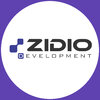Filter interviews by
Marquis Technologies Interview Questions and Answers
12 Interview questions
LTE call flow involves signaling and data transfer processes for establishing a voice or data session in LTE networks.
1. User Equipment (UE) initiates a call by sending a connection request to the eNodeB.
2. eNodeB forwards the request to the MME (Mobility Management Entity).
3. MME authenticates the user and establishes a bearer path.
4. The Serving Gateway (SGW) routes the data to the Packet Data Network Gateway (P...
To find the issue from UE, analyze logs, perform debugging, use testing tools, and collaborate with developers.
Analyze logs for error messages or warnings
Perform debugging to trace the issue in the code
Use testing tools like Selenium or JUnit to automate tests
Collaborate with developers to understand the issue and find a solution
The issue in 'ue' could be a typo or a missing character in a word.
Check for typos in the word containing 'ue'
Look for missing characters in the word with 'ue'
I am expecting a salary in line with industry standards and commensurate with my experience.
My expected salary is based on my experience, skills, and the job responsibilities.
I am open to negotiation and willing to discuss the salary package.
I am looking for a fair and competitive salary package.
I am expecting a salary that reflects my value to the company.
I am aware of the industry standards and salary ranges for...
4G architecture is a cellular network technology that uses packet switching to provide high-speed internet access.
4G stands for Fourth Generation and is the successor to 3G technology
It uses Long Term Evolution (LTE) technology for faster data transfer rates
The architecture consists of Radio Access Network (RAN), Evolved Packet Core (EPC), and User Equipment (UE)
RAN includes base stations and antennas that communi...
FDD and TDD are two different duplexing techniques used in wireless communication.
FDD stands for Frequency Division Duplexing and TDD stands for Time Division Duplexing.
In FDD, separate frequency bands are used for transmitting and receiving data, while in TDD, the same frequency band is used for both.
FDD is commonly used in technologies like LTE, while TDD is used in WiMAX and some LTE networks.
FDD provides bette...
LTE is a wireless communication standard for high-speed data transfer, while VoLTE is a technology that enables voice calls over LTE networks.
LTE stands for Long-Term Evolution and is a 4G wireless communication standard for high-speed data transfer.
VoLTE stands for Voice over LTE and is a technology that enables voice calls over LTE networks.
LTE is primarily used for data transfer, while VoLTE is used for voice c...
Modulation is the process of varying a carrier signal's characteristics to transmit information. LTE and VoLTE are different types of modulation.
LTE (Long-Term Evolution) is a standard for wireless broadband communication for mobile devices and data terminals.
VoLTE (Voice over LTE) is a technology that allows voice calls to be made over LTE networks.
LTE uses QPSK, 16QAM, and 64QAM modulation schemes.
VoLTE uses Ada...
I have experience in testing 4G and 5G networks.
I have tested 4G and 5G networks for functionality, performance, and interoperability.
I have used tools such as Wireshark, JMeter, and LoadRunner for testing.
I have also tested various features such as VoLTE, VoWiFi, and video calling.
I have worked with different network elements such as eNodeB, MME, SGW, and PGW.
I have experience in both manual and automated testing...
4G communication channels include LTE, WiMAX, and HSPA+.
LTE (Long-Term Evolution) is the most widely used 4G technology.
WiMAX (Worldwide Interoperability for Microwave Access) is another 4G technology.
HSPA+ (Evolved High-Speed Packet Access) is a 4G technology used by some carriers.
4G communication channels provide faster data transfer rates and improved network capacity compared to 3G.
4G networks also support mor...
Marquis Technologies Interview Experiences
13 interviews found
I applied via Referral and was interviewed before Dec 2023. There was 1 interview round.
(2 Questions)
- Q1. Explain LTE call flow
- Ans.
LTE call flow involves signaling and data transfer processes for establishing a voice or data session in LTE networks.
1. User Equipment (UE) initiates a call by sending a connection request to the eNodeB.
2. eNodeB forwards the request to the MME (Mobility Management Entity).
3. MME authenticates the user and establishes a bearer path.
4. The Serving Gateway (SGW) routes the data to the Packet Data Network Gateway (PGW).
5...
- Q2. Different bands available in LTE
I applied via Recruitment Consulltant and was interviewed before Jun 2023. There were 3 interview rounds.
(2 Questions)
- Q1. Srvcc LTE QXDM shannon
- Q2. 5G NR call flow
(2 Questions)
- Q1. Field work testing
- Q2. Find the issue from ue
- Ans.
The issue in 'ue' could be a typo or a missing character in a word.
Check for typos in the word containing 'ue'
Look for missing characters in the word with 'ue'
(2 Questions)
- Q1. How to find the issue from ue
- Ans.
To find the issue from UE, analyze logs, perform debugging, use testing tools, and collaborate with developers.
Analyze logs for error messages or warnings
Perform debugging to trace the issue in the code
Use testing tools like Selenium or JUnit to automate tests
Collaborate with developers to understand the issue and find a solution
- Q2. LTE QXDM shannon
Interview Preparation Tips
I applied via Naukri.com and was interviewed in May 2022. There were 2 interview rounds.

(2 Questions)
- Q1. What is modulation, LTE vs VOLTE
- Ans.
Modulation is the process of varying a carrier signal's characteristics to transmit information. LTE and VoLTE are different types of modulation.
LTE (Long-Term Evolution) is a standard for wireless broadband communication for mobile devices and data terminals.
VoLTE (Voice over LTE) is a technology that allows voice calls to be made over LTE networks.
LTE uses QPSK, 16QAM, and 64QAM modulation schemes.
VoLTE uses Adaptive...
- Q2. IOT and 5G based question.
Interview Preparation Tips
I applied via Approached by Company and was interviewed before Feb 2023. There were 2 interview rounds.
(3 Questions)
- Q1. Tell about Yourself
- Q2. Basics of Testing related
- Q3. Course related basics
(1 Question)
- Q1. Basics of Testing devices
(1 Question)
- Q1. About 3g,4g, and 5g technology
(1 Question)
- Q1. Salary package dissusion
Interview Preparation Tips
I applied via Indeed and was interviewed before Sep 2022. There were 2 interview rounds.
(1 Question)
- Q1. About me, previous experience, Notice period
(1 Question)
- Q1. About experience
I applied via Recruitment Consulltant and was interviewed before Apr 2022. There were 3 interview rounds.
(1 Question)
- Q1. What is your name.
(3 Questions)
- Q1. LTE techniqual knowldege, College Project, techniqual skills
- Q2. VoLTE, IMS, EPSFB, CSFB, SRVCC, VoNR
- Q3. Hydrophonic fodder machine
(1 Question)
- Q1. Are you willing travel overseas
Interview Preparation Tips
I applied via Referral and was interviewed before Feb 2022. There were 4 interview rounds.

(2 Questions)
- Q1. HR would ask some basic question just to make sure you are aware about the JD. This is to check if you are well aware of their requirement and are keen working for the same
- Q2. Can you draw 4G architecture
- Ans. 4G architecture was drawn and explained
(3 Questions)
- Q1. Tell in detail about the telecom technologies
- Ans.
Telecom technologies refer to the various technologies used in the telecommunications industry to transmit and receive information.
Telephony: The technology of transmitting voice signals over long distances.
Wireless Communication: The transmission of information without the use of physical connections.
Internet Protocol (IP): The protocol used for transmitting data packets over the internet.
Fiber Optics: The use of thin...
- Q2. Difference between FDD and TDD
- Ans.
FDD and TDD are two different duplexing techniques used in wireless communication.
FDD stands for Frequency Division Duplexing and TDD stands for Time Division Duplexing.
In FDD, separate frequency bands are used for transmitting and receiving data, while in TDD, the same frequency band is used for both.
FDD is commonly used in technologies like LTE, while TDD is used in WiMAX and some LTE networks.
FDD provides better qua...
- Q3. Communication channels in 4G
- Ans.
4G communication channels include LTE, WiMAX, and HSPA+.
LTE (Long-Term Evolution) is the most widely used 4G technology.
WiMAX (Worldwide Interoperability for Microwave Access) is another 4G technology.
HSPA+ (Evolved High-Speed Packet Access) is a 4G technology used by some carriers.
4G communication channels provide faster data transfer rates and improved network capacity compared to 3G.
4G networks also support more sim...
(1 Question)
- Q1. Discussion with the Manager, Tech cum HR discussion
Interview Preparation Tips
- Telecom Testing
- Telecom Technologies
Skills evaluated in this interview
I appeared for an interview in Nov 2021.
(2 Questions)
- Q1. First is HR round and second is technical round
- Q2. Based on 4G/5G And Device test engineer
Interview Preparation Tips
Good environment of device testing and log analysis
I applied via Walk-in and was interviewed before Apr 2022. There were 2 interview rounds.

(4 Questions)
- Q1. Tell me about yourself
- Q2. 4g 5g testing experience
- Ans.
I have experience in testing 4G and 5G networks.
I have tested 4G and 5G networks for functionality, performance, and interoperability.
I have used tools such as Wireshark, JMeter, and LoadRunner for testing.
I have also tested various features such as VoLTE, VoWiFi, and video calling.
I have worked with different network elements such as eNodeB, MME, SGW, and PGW.
I have experience in both manual and automated testing of 4...
- Q3. Last ctc expected ctc
- Ans.
I am expecting a salary in line with industry standards and commensurate with my experience.
My expected salary is based on my experience, skills, and the job responsibilities.
I am open to negotiation and willing to discuss the salary package.
I am looking for a fair and competitive salary package.
I am expecting a salary that reflects my value to the company.
I am aware of the industry standards and salary ranges for this...
- Q4. Ready to relocate to required location
Interview Preparation Tips
- LTE
- 5gnr
- Attach
- Registration
- Bug Reporting
Top trending discussions






Marquis Technologies Interview FAQs
The duration of Marquis Technologies interview process can vary, but typically it takes about less than 2 weeks to complete.
Tell us how to improve this page.
Marquis Technologies Interviews By Designations
Interview Questions for Popular Designations
- Test Engineer Interview Questions
- Senior Executive Interview Questions
- Intern Interview Questions
- Software Developer Interview Questions
- Sales Executive Interview Questions
- Graduate Engineer Trainee (Get) Interview Questions
- Java Developer Interview Questions
- Accountant Interview Questions
- Show more
Overall Interview Experience Rating
based on 10 interview experiences
Difficulty level
Duration
Interview Questions from Similar Companies
Marquis Technologies Reviews and Ratings
based on 127 reviews
Rating in categories
|
Test Engineer
322
salaries
| ₹2 L/yr - ₹9.4 L/yr |
|
Senior Test Engineer
52
salaries
| ₹4.9 L/yr - ₹14.1 L/yr |
|
Mobile Test Engineer
22
salaries
| ₹2 L/yr - ₹7.1 L/yr |
|
Softwaretest Engineer
21
salaries
| ₹2 L/yr - ₹7 L/yr |
|
Test Lead
16
salaries
| ₹9.5 L/yr - ₹18 L/yr |

HCL Infosystems

Zidio Development

Northcorp Software

Accel Frontline
- Home >
- Interviews >
- Marquis Technologies Interview Questions














